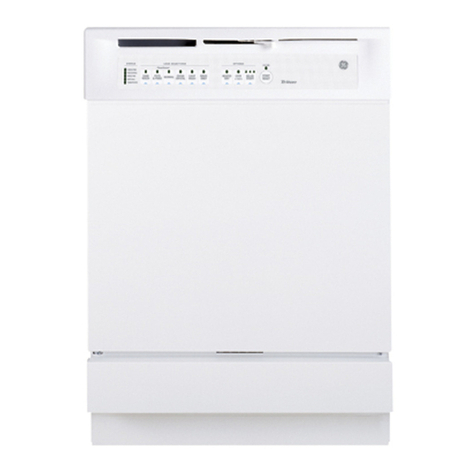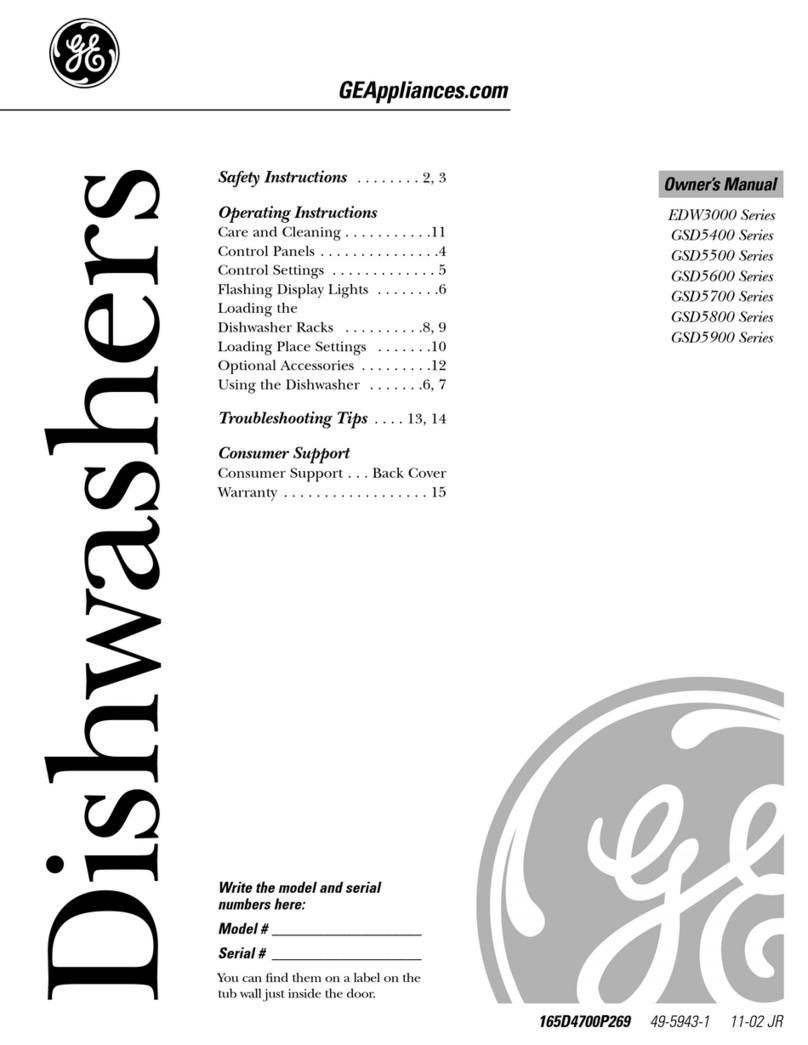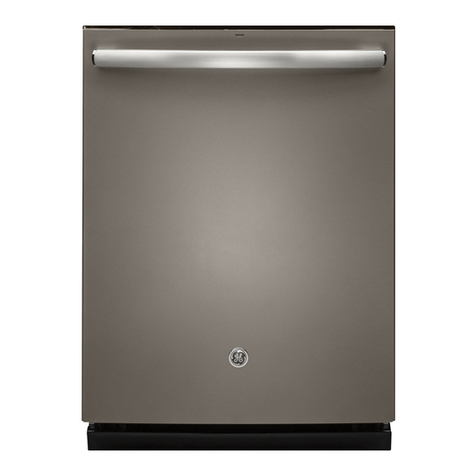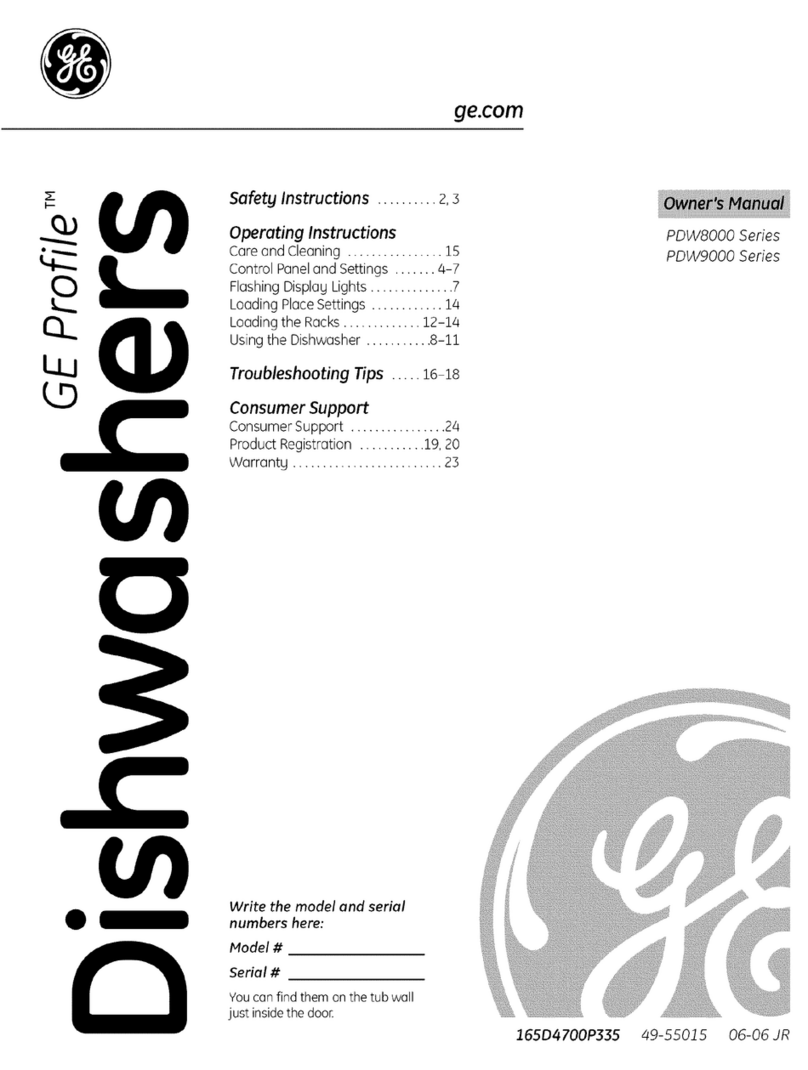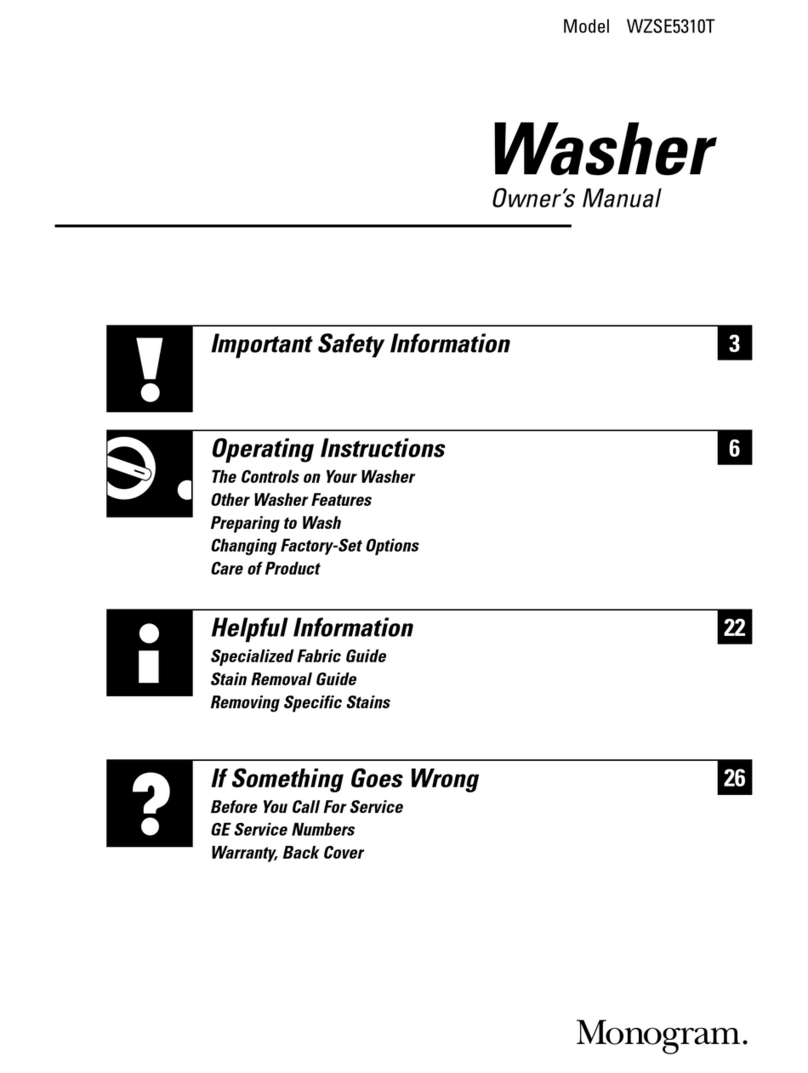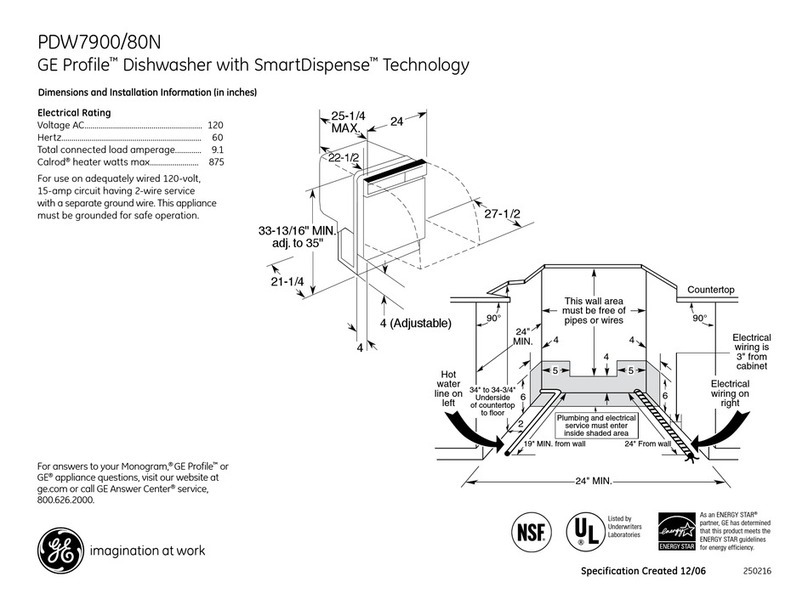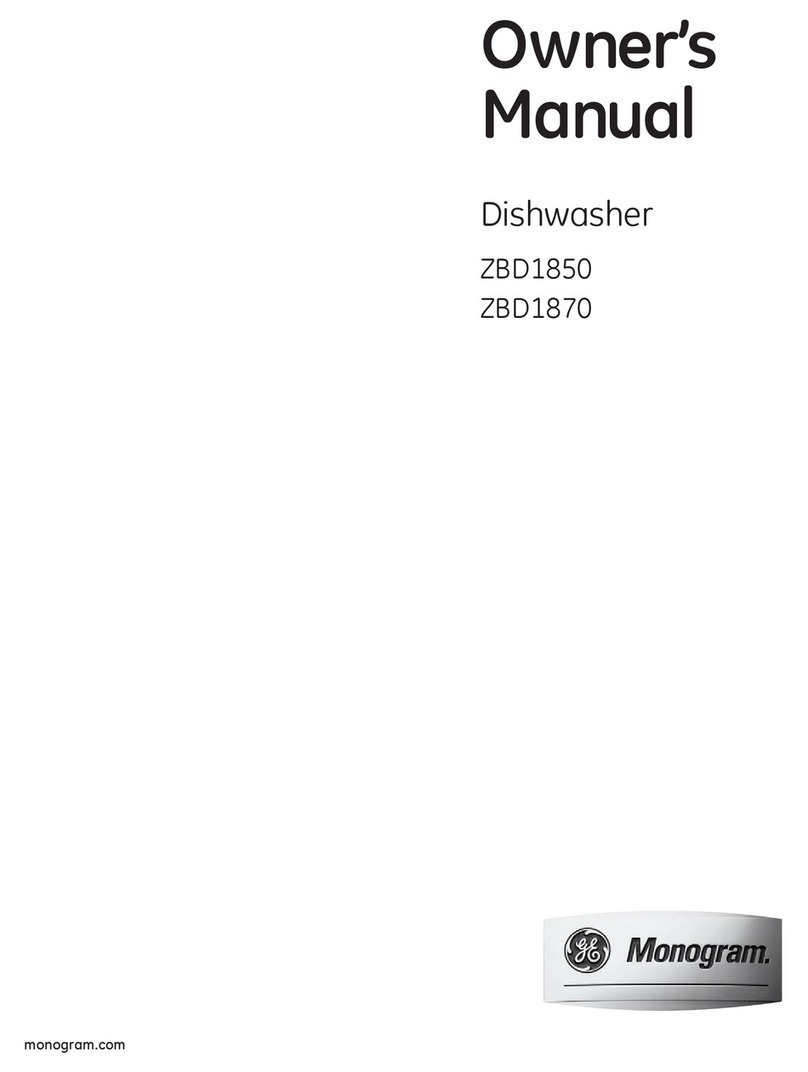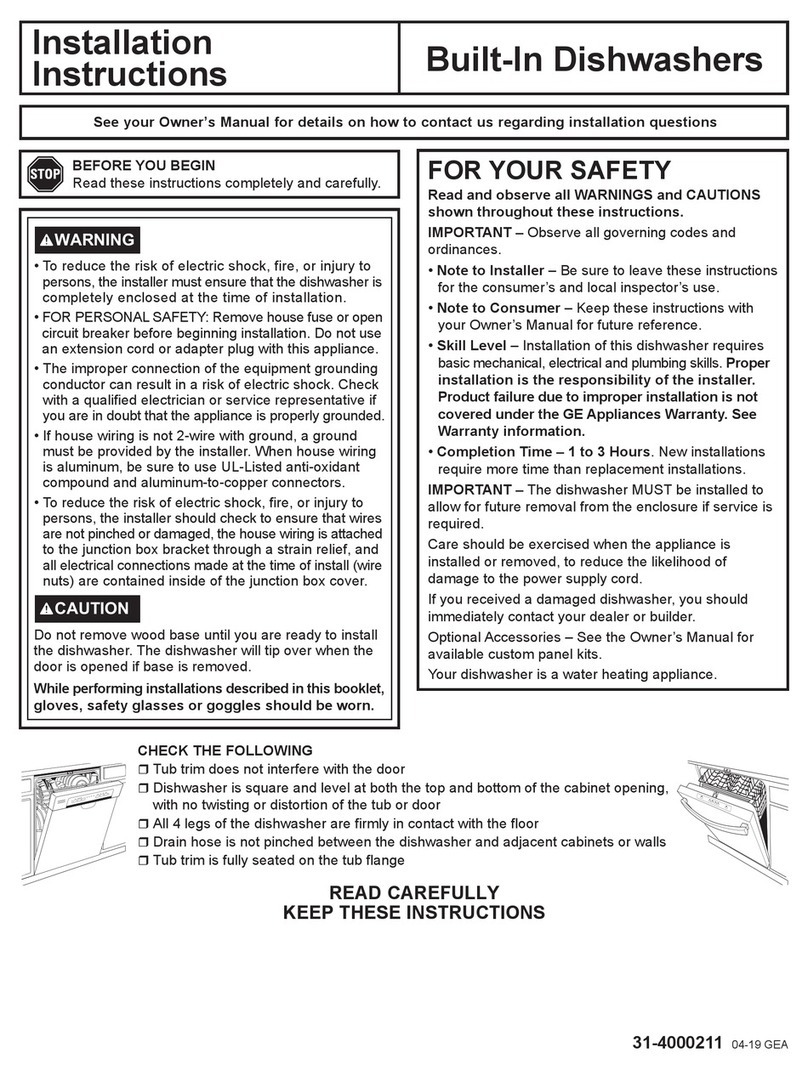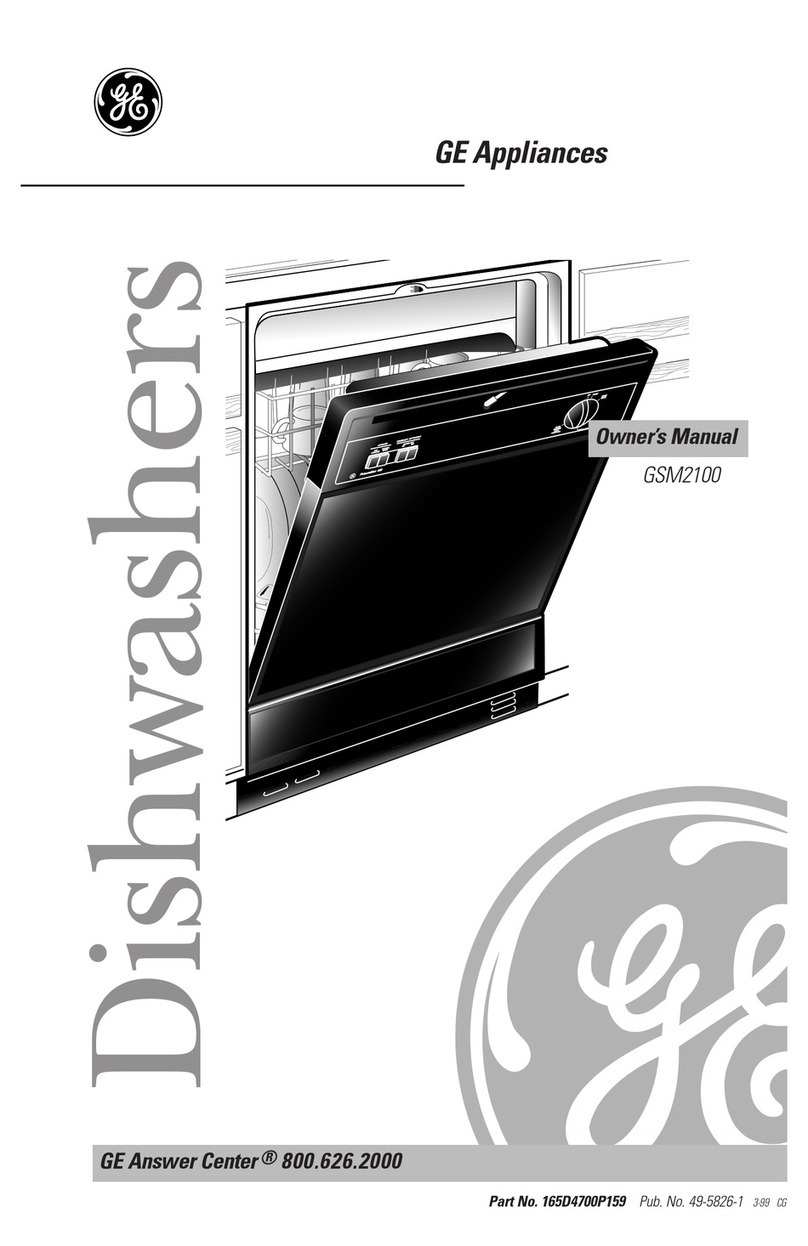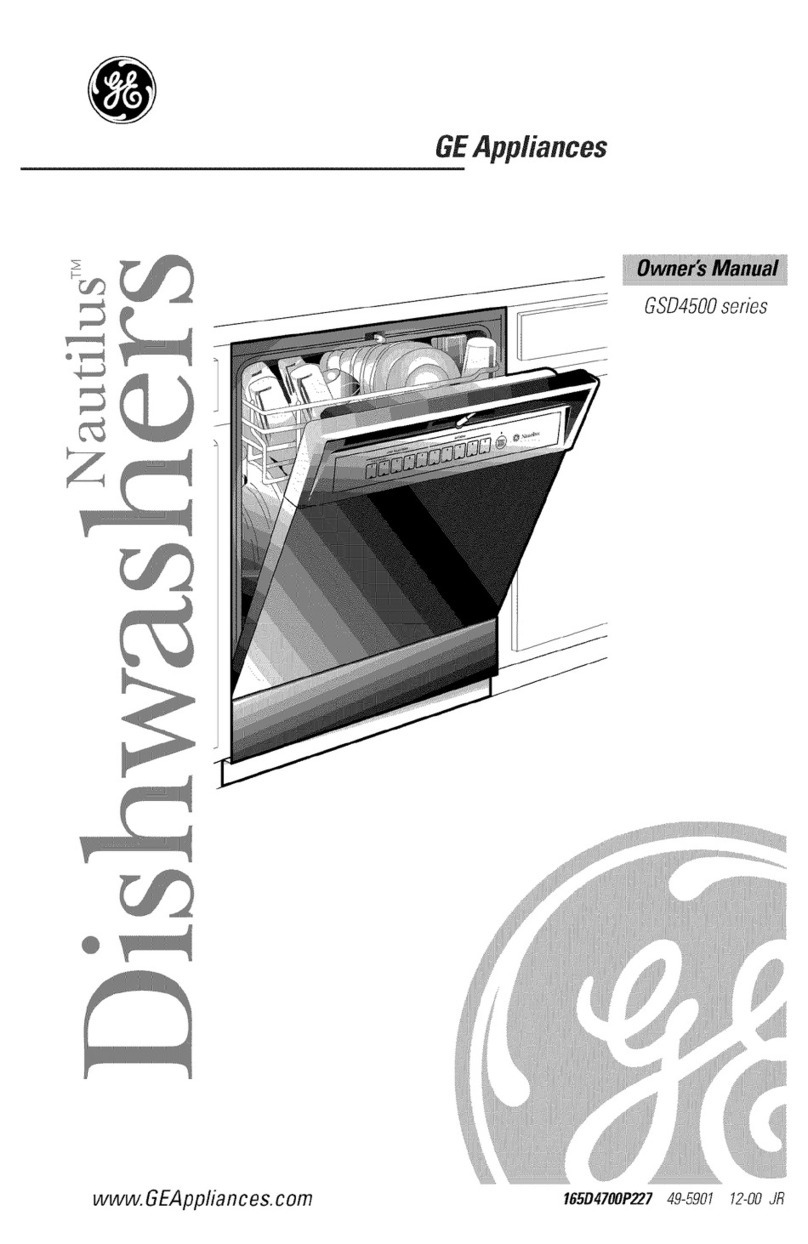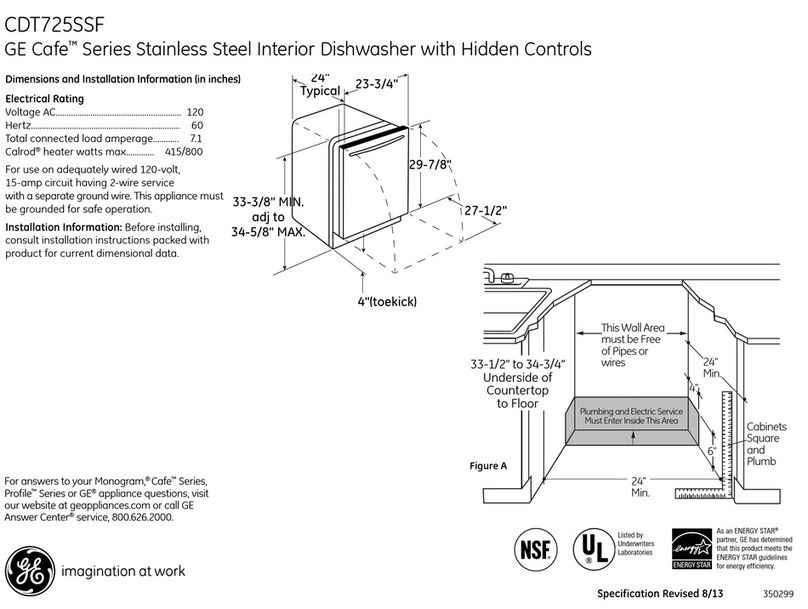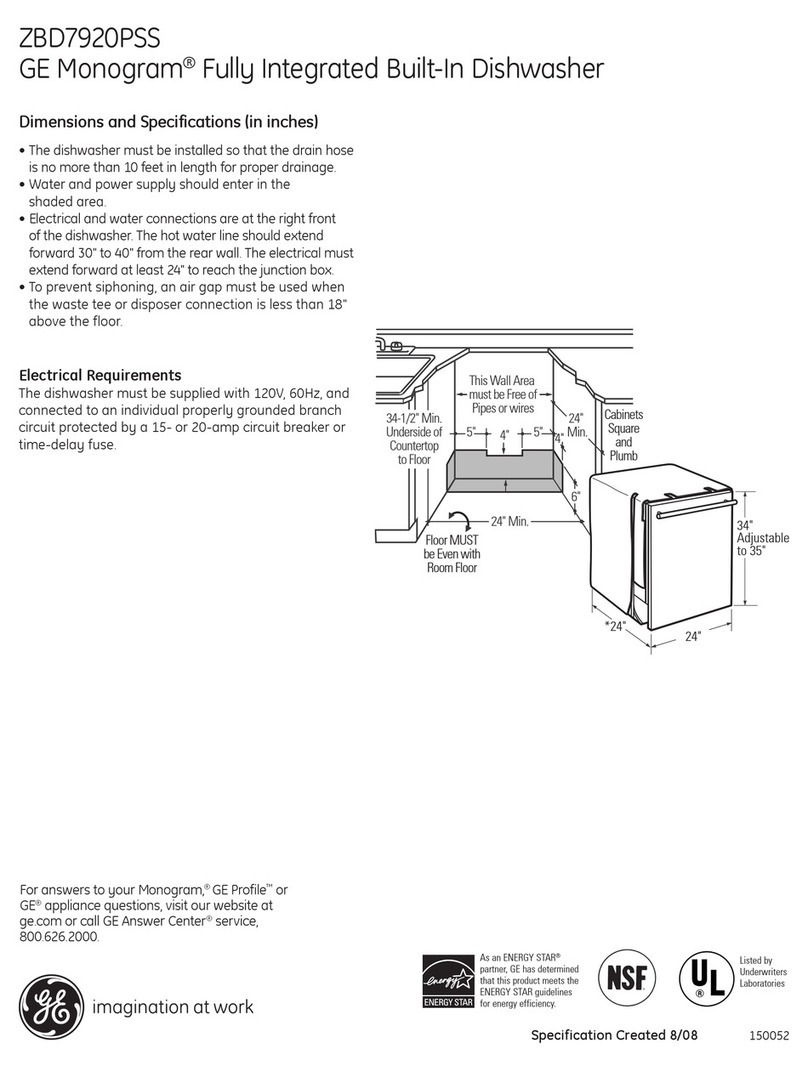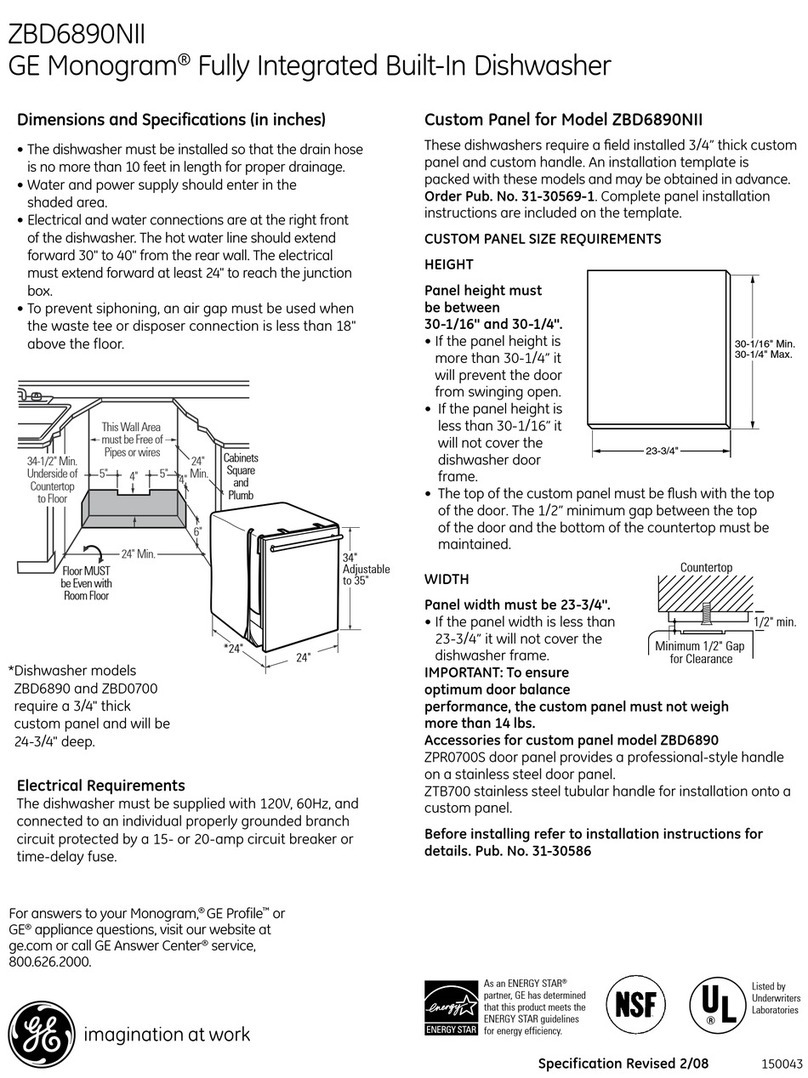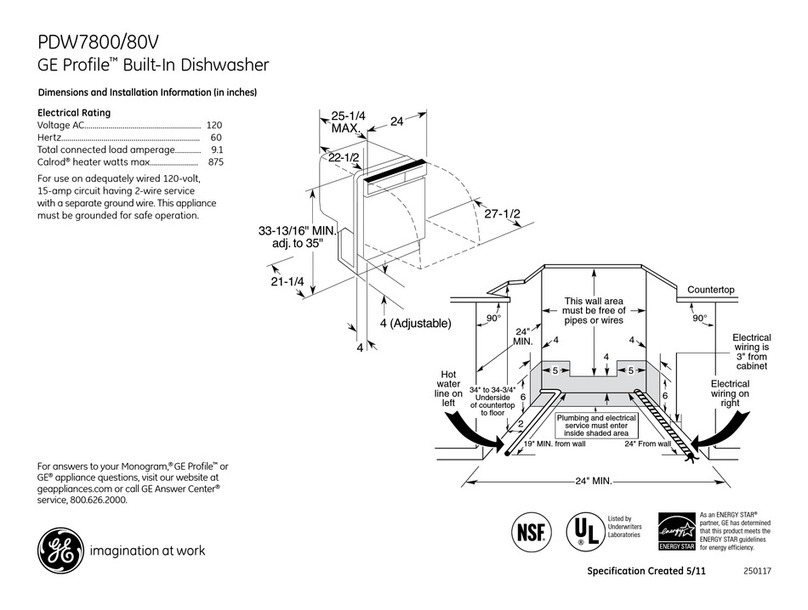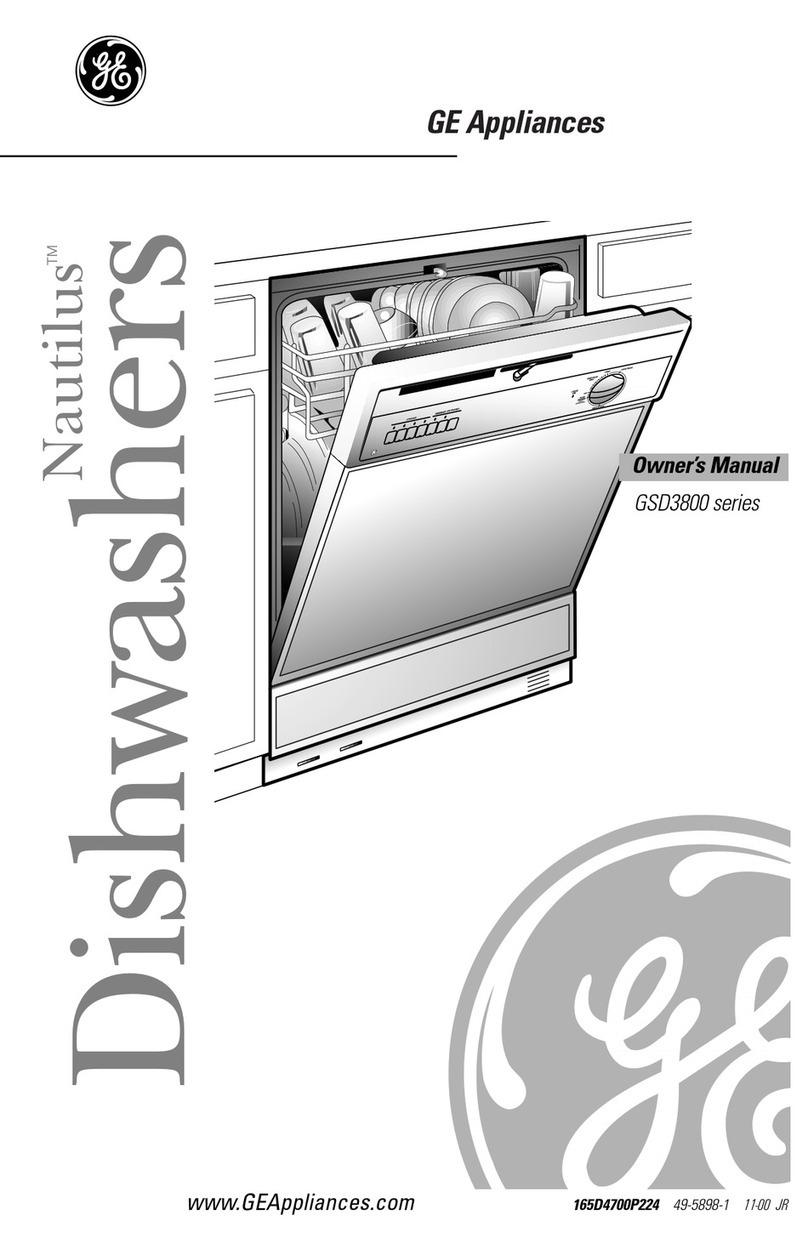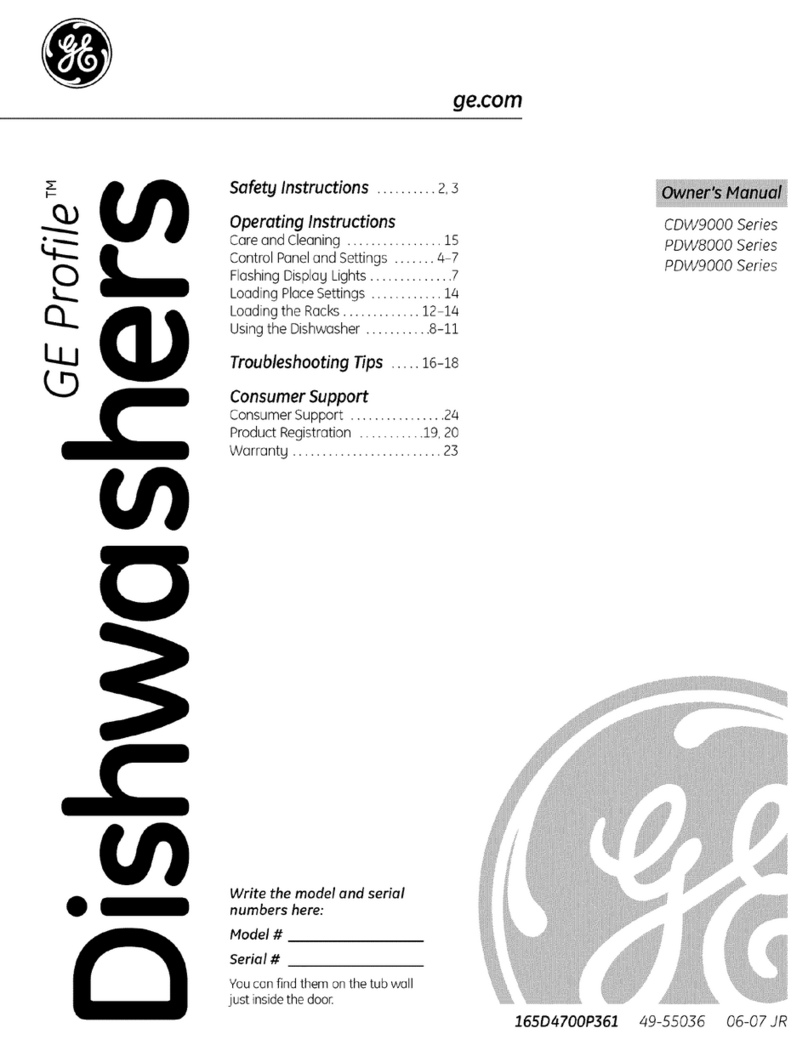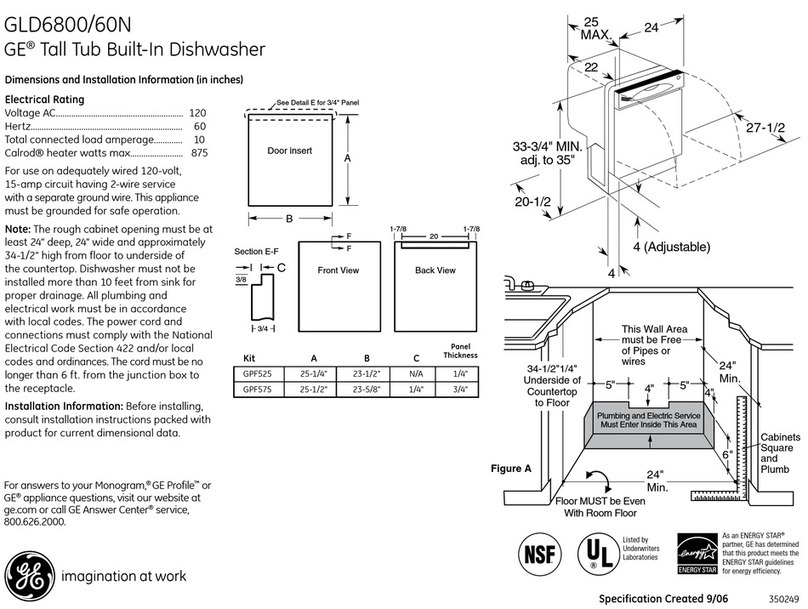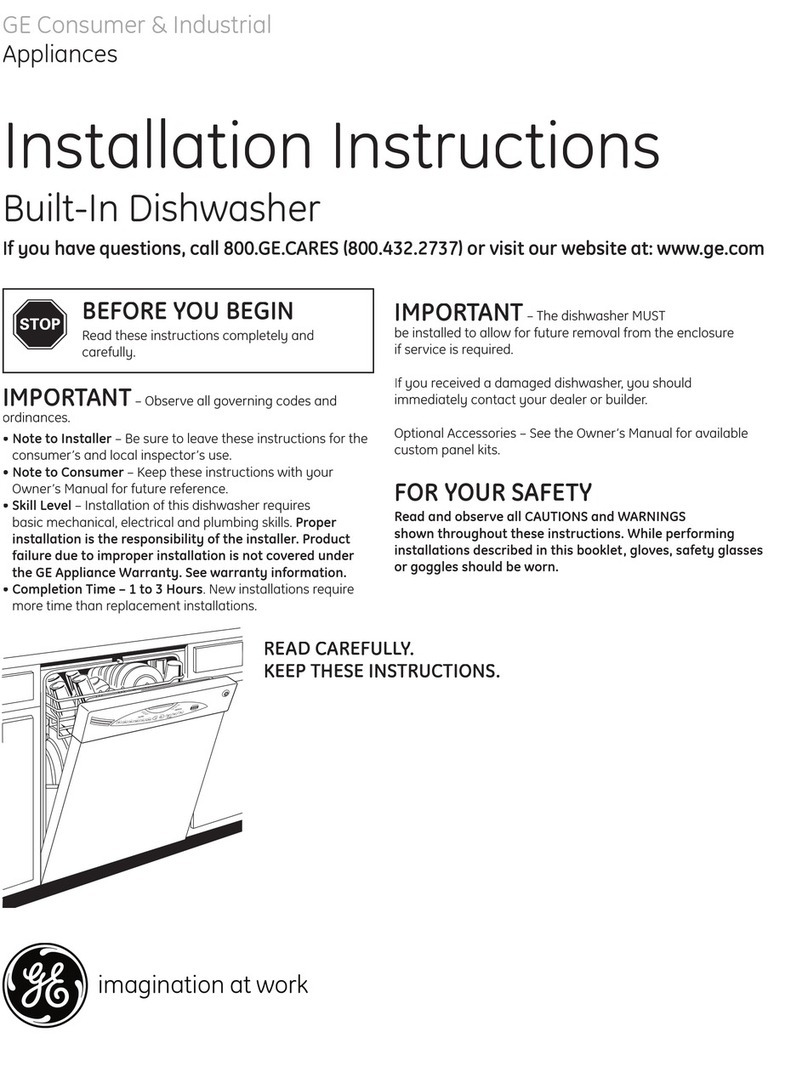
Control settings.
PreWash (on some models)
Prewash is an extra wash before the main
wash. Use it for heavily soiled clothes or for
clothes with a care label that recommends
prewashing before washing. Be sure to add
liquid or powder high-efficiency detergent,
or the proper wash additive to the prewash
dispenser.
PreWash must be selected prior to pressing
Start.
The PreWash feature will fill the washer with
cold water (adding the prewash detergent),
tumble the clothes, drain and spin. Then the
washer will run the selected wash cycle.
NOTE: In some special cycles, the prewash
is selected automatically as the default. You
can modify this selection at any time.
7My Cycle (on some models)
To save a favorite cycle, set the desired settings
for wash cycle, soil level, spin speed and wash
temp settings and hold down the My Cycle
button for 3 seconds. A beep will sound to
indicate the cycle has been saved.
To use your custom cycle, press the
My Cycle button before washing a load.
To change the saved cycle, set the desired
settings and hold down the
My Cycle button for 3 seconds.
NOTE: When using My Cycle, wash options
cannot be modified after the cycle has been
started.
NOTE: If you change wash options with
My Cycle before starting the cycle, the
My Cycle light will turn off and you will
be returned to the base cycle.
3
4
5
Soil
Change the Soil level to increase or
decrease the wash time to remove different
amounts of soil.
To change the Soil level, press the Soil level
button until you have reached the desired
setting. You can choose between Extra
Light, Light, Normal, Heavy or Extra Heavy
soil levels.
Temp
Adjust to select the proper main water
temperature for the wash cycle. The
PreSoak and PreWash rinse water is
always cold to help reduce energy usage and
reduce setting of stains and wrinkles.
Follow the fabric manufacturer’s care label
when selecting the wash temperature.
To change the wash temperature, press
the wash Temp button until you have
reached the desired setting. You can
choose between Tap Cold, Cold, Warm, Hot or
Extra Hot (Extra Hot is available on models
equipped with a heater). By design, to
protect fabrics, not all wash temperatures are
available for certain wash cycles.
NOTE: The first 10 seconds of the wash
fill is always cold. This feature assists in
conditioning the fabric and preventing stains
from setting on garments.
Spin
Changing the Spin speed changes the final
spin speed of the cycles. Always follow the
garment manufacturer’s care label when
changing the Spin speed.
To change the Spin speed, press the Spin
speed button until you have reached the
desired setting. You can choose between No
Spin, Low, Medium, High or Max. Higher spin
speeds are not available on certain cycles,
such as Delicates.
Higher spin speeds remove more water from
the clothes and will help reduce dry time, but
may also increase the possibility of setting
wrinkles on some fabrics.
6
Add Steam (on some models)
Add Steam adds steam into the washer
to assist with loosening stains on the
Whites, Colors/Normal, Towels/Sheets,
Active Wear or Power Clean (depending on
model), Bulky Bedding or Sanitize cycles.
To use:
1. Turn power ON and select a wash cycle.
2. Select the Add Steam button to activate
steam.
3. Press the Start/Pause button.
(appearance will vary)
(appearance will vary)
(appearance will vary)
8
6
